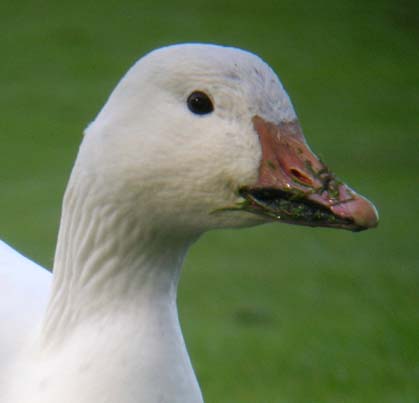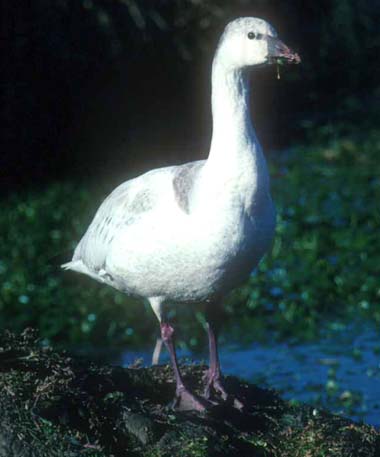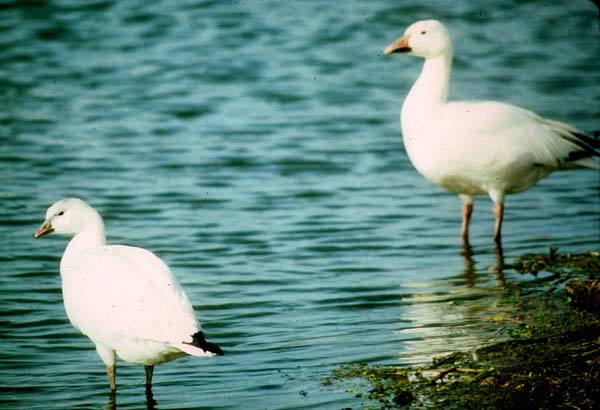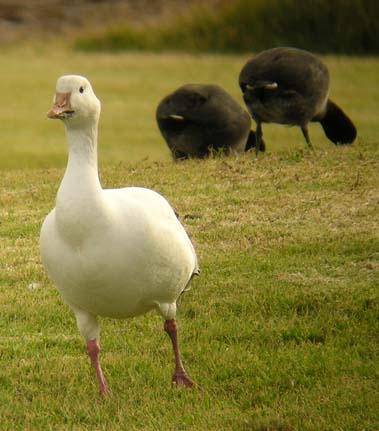 Here's
the problem. Say you are walking by Crespi Pond at Pt. Pinos on a crisp
winter's day, and you suddenly notice there is a white goose grazing with
the ubiquitous American Coots on the 17th green of the Pacific Grove golf
course. It's an all-white goose with black primaries: an adult. It is obviously
either a Snow Goose or a Ross's Goose, both about equally rare in Monterey
County and both of which have occurred multiple times in previous winters
on Crespi Pond. The goose doesn't look all that big, and the bill doesn't
look all that long, but it does have a black "grin patch" that is characteristic
of Snow Goose. Here's
the problem. Say you are walking by Crespi Pond at Pt. Pinos on a crisp
winter's day, and you suddenly notice there is a white goose grazing with
the ubiquitous American Coots on the 17th green of the Pacific Grove golf
course. It's an all-white goose with black primaries: an adult. It is obviously
either a Snow Goose or a Ross's Goose, both about equally rare in Monterey
County and both of which have occurred multiple times in previous winters
on Crespi Pond. The goose doesn't look all that big, and the bill doesn't
look all that long, but it does have a black "grin patch" that is characteristic
of Snow Goose.
Is it a Snow Goose? Maybe. But it does look small and details of the bill seem odd. And hybridization between Snow and Ross's Goose is known (Ryder 1969, Trauger et al. 1971). Could it be a hybrid? Maybe. In fact, I published a paper on this problem focusing on yet another goose on Crespi back in December 1990 (Roberson 1993; more on that below). This is exactly the situation my wife Rita Carratello and I faced on 4 Dec 2004. I've gone back to study and photograph it since (on 6 & 7 Dec; photos right and below) and can firmly state: I don't know, but I strongly suspect this goose has hybrid origin. Let's see what you think. A completely typical first-year Ross's Goose wintered at this exact same spot from 18 Dec 2002-12 Mar 2003. Here's an overview photo of it (below left) grazing with coots on the 17th green. Next to it (below right) is a photo from 7 Dec 2004 of the mystery goose grazing on the same green (but showing Crespi in the background, rather than the ocean). I use the coots for comparison because there were no other geese around to use for comparative purposes. |
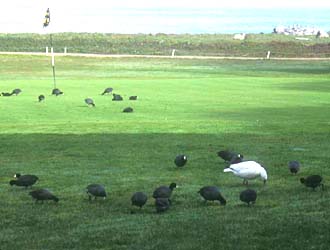
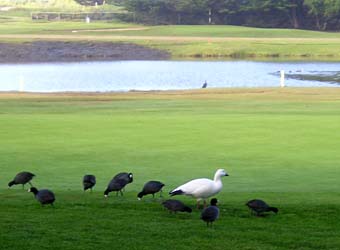
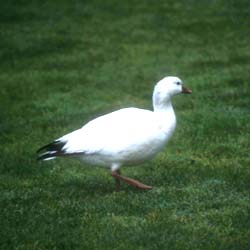 In
comparing the two photos, it does look to me like the 2004 bird (above
right) is slightly larger than the 2002 bird (above left), but not dramatically
so. And, at a distance, the 2004 bird sure seemed to have a short bill.
Indeed, compare it with the bill length of the 2002 bird (directly to the
right) and notice that both look fairly short. I would have expected a
Snow Goose to look longer-billed, even a distance.
In
comparing the two photos, it does look to me like the 2004 bird (above
right) is slightly larger than the 2002 bird (above left), but not dramatically
so. And, at a distance, the 2004 bird sure seemed to have a short bill.
Indeed, compare it with the bill length of the 2002 bird (directly to the
right) and notice that both look fairly short. I would have expected a
Snow Goose to look longer-billed, even a distance.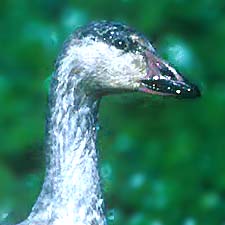
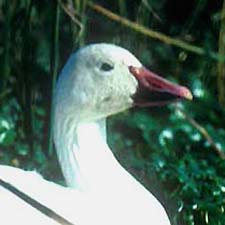
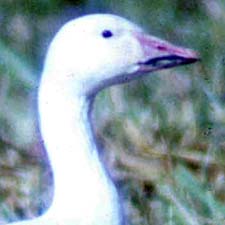
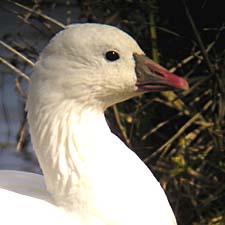
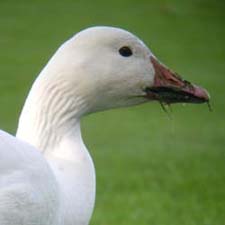
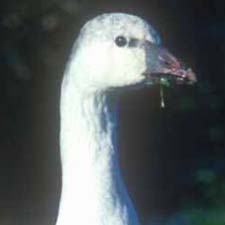
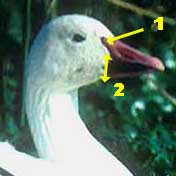 Here's
some observations about the above set of photos. Beyond some overall comments,
I'll refer to two distinct parts of the bill shown on the photo (right):
(1) the "bill process," an extension of the bill back toward the eye from
the upper mandible, and (2) the shape of how the feathers of the face meet
the bill below the "bill process":
Here's
some observations about the above set of photos. Beyond some overall comments,
I'll refer to two distinct parts of the bill shown on the photo (right):
(1) the "bill process," an extension of the bill back toward the eye from
the upper mandible, and (2) the shape of how the feathers of the face meet
the bill below the "bill process":
